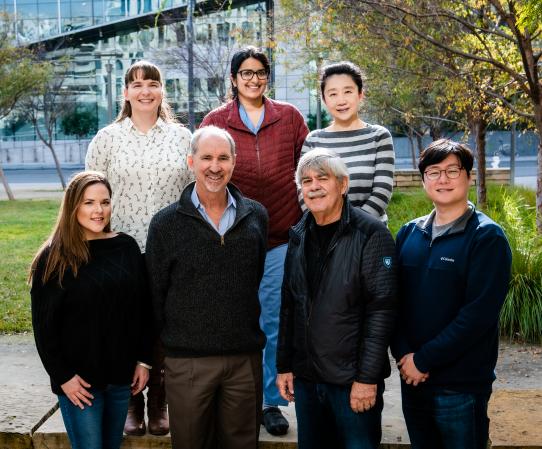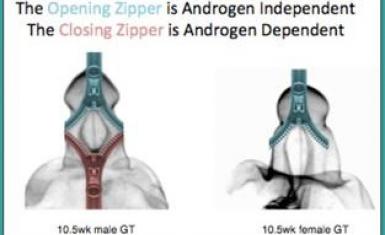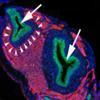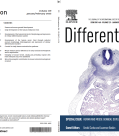We have described the basic development of the urethra including the two-zipper hypothesis of penile urethral development. The human male urethra appears to form by two mechanisms: (1) An initial androgen independent “opening zipper”and (2) An androgen dependent “closing zipper.”
Our Research
Hypospadias
Our banked blood, DNA and serum from patients with hypospadias have allowed us to identified a number of genes that are associated with increased risk of hypospadias. Additionally, we have shown that defects in androgen metabolism are a rare form of hypospadias and account for only a tiny minority of patents with hypospadias.
Neuroanatomy of the External Genitalia
We described in detail with histology, computer 3-D reconstruction, immunohistochemistry and Optical projection tomography the anatomy of the human male and female external genitalia. This work has lead to a more precise anatomical understanding of the surgical anatomy of the normal male and the hypospadiac penis.
Bladder Development
We hypothesize that select genes differentially expressed before smooth muscle differentiation, rather than those expressed after smooth muscle differentiation, are part of the mechanism that induces bladder smooth muscle formation.
Clinical / Translational
Our lab is deeply rooted in translating scientific discoveries to health improvement. Results from our primary studies have been published with a goal of practical and constructive use in our clinical practice.
Featured Work
New 8-Page Supplement in Differentiation on "Human and Mouse gonadal differentiation" (Jan-Feb 2023)
We would like to acknowledge our incredible UCSF research team, all of our collaborators, all of our funding sources and specifically support from UCSF Department of Urology to make this project possible.
Our People

We have assembled some of the brightest minds in pediatric science to help explore leading questions and bridge the gap between bench and bedside. From postdoctoral scholars to senior scientists, our group is passionate about leading the way.







